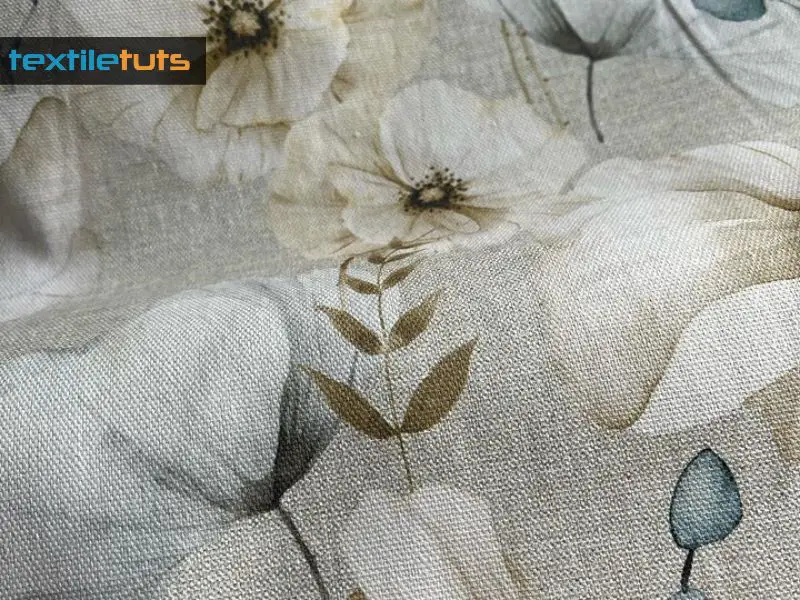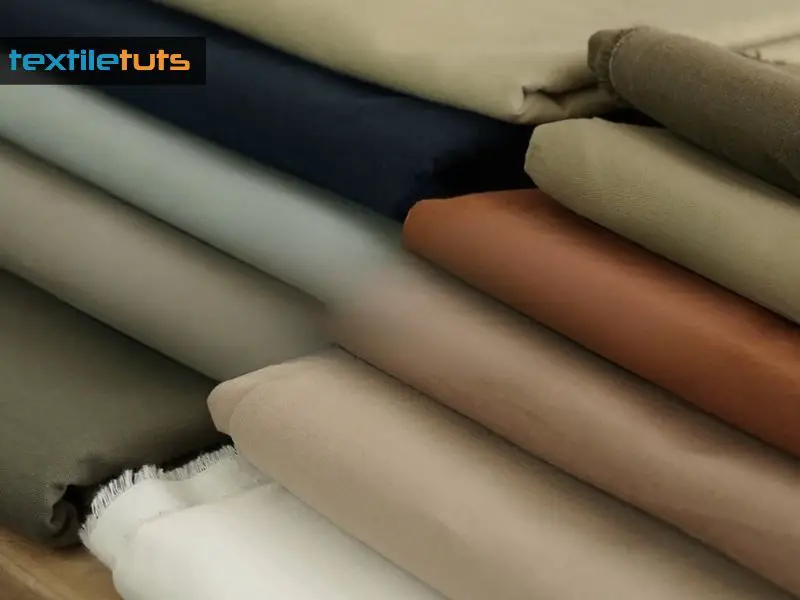Does Canvas Shrink When Washed? – Insider Secrets
Have you ever wondered about the durability and care of your beloved canvas items? One common question posed by many is, ‘Does Canvas Shrink When Washed?’ As you look to maintain the quality and fit of your canvas fabrics, understanding the reactions they have to washing is crucial.
Canvas can shrink when washed, especially if the water is hot and the drying method is too aggressive. The amount of shrinkage depends on factors such as the type of canvas, the use of detergent, and the washing conditions.
Through this article, you will learn about the canvas fabric care, equipping you with the knowledge to preserve the life and look of your canvas goods. Keep reading as I unravel the mystery behind shrinkage and provide you with the best practices for washing.
Does Washing Canvas Cause It to Shrink?
Canvas is a woven fabric typically made from cotton or linen fibers. So, like many fabrics, It shrinks when exposed to heat and agitation in the washing machine or dryer. But how much of it actually shrinks?

Well, the amount of shrinkage can vary depending on the exact canvas fabric blend, but generally, the canvas can shrink up to about 5% during washing. Some types of canvas like duck cloth may shrink even more.
If you’re working with a canvas item and it’s marked as pre-washed or pre-shrunk, you’re in luck because the shrinkage should be minimal. But if it’s not, and you’re washing canvas for the first time, you might see a little size reduction, mainly if you use warm or hot water and a dryer.
Pre-washing canvas before sewing or crafting with it can help limit later shrinkage. Washing in cool or cold water on a gentle cycle, and hang drying rather than machine drying, can reduce shrinkage as well.
Once It has shrunk, there usually is no way to reverse the shrinkage and stretch it back to its original size. Proper washing methods on future washes can help prevent any further shrinkage though.
Factors that Affect Canvas Fabric Shrinkage
Canvas fabric, like many textile materials, can be prone to shrinkage due to various factors. Shrinkage refers to the reduction in size of fabric after it goes through a washing and drying process.

Here are some of the key factors that can affect the shrinkage of canvas fabric:
Natural Fibers at Play
Canvas fabric is made from natural fibers, and when they absorb water, causing the fibers to swell and ultimately shorten, which results in the fabric contracting. If your canvas hasn’t been pre-shrunk or treated, you might notice a considerable size reduction once it encounters moisture.
Weave Tightness
A canvas is renowned for its tight weave, which not only provides robustness but also affects its shrinkage propensity. Tighter weaves often shrink more because they have less room to compress before encountering resistance from the neighboring threads.
So, the tighter your canvas weave, the higher the likelihood of shrinkage when the fabric is washed or exposed to water.
Fabric Finish
The finishing processes that canvas undergo could include treatments that affect its shrink resistance. For example, pre-shrinking treatments are often applied to reduce subsequent shrinkage. Other finishings, like waterproofing or applying fire retardants, can also have an impact on the fabric’s propensity to shrink.
The Swell and Shrink Dance
When this fabric meets water, it’s not just a wash—it’s a full-on dance of the fibers. As mentioned, cotton fibers absorb water, expand, and then shrink, but it’s not a one-time show. Repeated exposure to water can cause ongoing shrinkage, reshaping your canvas over time.
This is why prewashing or water-treating your canvas fabric is a smart move, especially if you’re using it for items that will face the elements or frequent laundering.
Temperature’s Tightening Effect
Ever heard the saying, “Heat it up to tighten it up”? Well, it’s not just a catchy phrase—it’s a scientific fact when it comes to canvas fabric.
Heat can accelerate shrinking as it aids in the moisture absorption process and causes further tightening of the weave. Be wary of hot washes and dryers—unless you’re intent on a shrinking spree.
Pre-washing Canvas: Pros and Cons
Pre-washing canvas fabric, especially in the context of art supplies or DIY projects, is not a common practice, as the canvas is often sold in its raw state.
But there may be instances where pre-washing canvas could be considered. Here are some potential pros and cons:
Pros of Pre-Washing Canvas
Freedom from Shrinking Surprises
Pre-washing helps dodge the old shrinking canvas surprise. This is particularly relevant if you plan to use the canvas for a project where size stability is crucial.
Bye-bye, Stiffness!
Brand-new canvas can sometimes feel as stiff as a board, and working with it might feel like you’re trying to fold cardboard. But guess what? A trip through the wash softens up those fibers, making the canvas much more pliable and easier to manipulate, whether you’re painting, sewing, or setting it up on a frame.
Removal of Chemical Residue
Canvas often comes with a bit of a “fresh from the factory” cocktail of chemicals. Pre-washing helps to bid adieu to any residue that may interfere with your paints or cause unexpected reactions.
Natural Look and Feel
If you’re going for a more organic or vintage look, pre-washing is your ticket. It not only softens the canvas but can also give it a slightly worn-in feel, which just adds character to your work. If you’re dyeing or painting on your fabric, pre-washing ensures that any sizing or chemicals used in manufacturing won’t interfere with absorption or adhesion. This is especially important when choosing the best paint for fabric printing, as it works most effectively on a clean, pre-treated surface. By prepping your fabric, you set the stage for vibrant, lasting colors that make your designs truly stand out.
Cons of Pre-Washing Canvas
Potential Wrinkling
Once you’ve washed your canvas, get ready for a trip to Wrinkle City. The once smooth surface can end up looking like a labyrinth of creases. If you’re painting, this might not be an issue, but for sewing projects, it means you’ll have to iron out those wrinkles before you can proceed.
Color Fading
If you’ve got colored canvas, washing could potentially cause some fading or bleeding. This means you might end up with a hue that’s a shade or two lighter than what you initially chose, which could be a pro or con, depending on your artistic vision.
Fraying Edge
Let’s not forget the notorious fraying fiesta. Washing raw canvas can lead to fraying edges, adding extra work to neatly finish or reinforce them before you get to the fun part of your project.
Considerations
- Type of Canvas: The decision to pre-wash canvas depends on the specific type and intended use of the canvas. Some canvases are pre-primed, and washing may interfere with the primer.
- Artistic Intent: For artists, the decision to pre-wash canvas should be driven by artistic intent. If the texture and raw state of the canvas are integral to your work, pre-washing may not be desirable.
- Test Piece: If you are uncertain about the effects of pre-washing, consider testing on a small piece of canvas before committing to washing the entire piece.
Tips for Maintaining Canvas Fabric to Prevent Shrinkage
To keep your canvas items looking snappy and fitting just right, here’s your go-to guide for optimal care and maintenance.

Understand Your Canvas
Before you square off against shrinkage, know what you’re dealing with. Canvas is often made from cotton, linen, or a blend of both – fibers that are no strangers to shrinkage when they meet heat.
Wash it Right
- Cold Water Cycle:
When laundry day looms, treat your canvas with kid gloves. Opt for the cold water cycle on your washing machine to prevent the fabric from tightening up like a new pair of shoes. - Gentle Detergent:
Use a mild detergent designed for delicate fabrics. Harsh chemicals are the arch-enemies of canvas, leaving you with a shrunken mess. - Hand Washing Option:
For the super-protective canvas parent, hand washing is your best bet. It’s like giving your canvas a spa treatment in a cool water bath with just a touch of gentle soap.
Dry with Care
- Air-Dry, Always:
Thermal shock is real, folks. Keep that canvas away from the dryer and let it air-dry instead. Find a spot with good air circulation but out of direct sunlight, which may cause fading. - Keep it Flat:
Lay flat while drying to help maintain shape. Gravity can be your friend here, preventing any warping or stretching.
Standard Storage Savvy
- Cool, Dry Place:
Moisture is the nemesis of canvas longevity. Stow your canvas treasures in a cool, dry place where they won’t feel the urge to shrink. - Avoid Folding:
If possible, store canvas items rolled rather than folded. It dodges creases and any potential shrinking that could occur at the folds.
Regular Maintenance
- Spot Cleaning:
Address spills and stains promptly with spot cleaning. A quick, localized cleaning can save you from an all-over wash, thus reducing the risk of shrinkage. - Ironing Out Wrinkles:
If you must iron, keep it cool and don’t linger. High heat can spark shrinkage, so use a low-heat setting and consider a pressing cloth to buffer the heat.
Retreat When Necessary
Consider a waterproofing spray post-cleaning for a canvas that braves the elements. This creates a barrier against moisture and could enhance the fabric’s resilience
Be Mindful of Use
Be aware of how you use canvas products. Excessive strain can stretch the fabric, which then might shrink in subsequent cleaning cycles.
Wrap-up
Canvas tends to shrink when washed. Factors such as the type and quality of the canvas, as well as the washing and drying methods used, can all play a role in whether or not the fabric will shrink.
If you are worried about your canvas shrinking, it’s best to always follow the care instructions and be cautious when washing canvas to avoid any unwanted surprises. With these tips in mind, you can confidently enjoy your canvas items without worrying about shrinkage.

